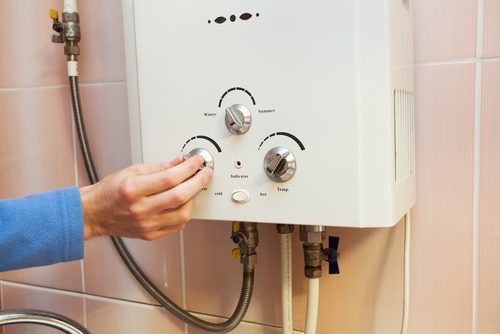Efficient Techniques for Caring for Your Home's Hot Water SystemExpert Tips on Caring for Your Home's Hot Water System
Efficient Techniques for Caring for Your Home's Hot Water SystemExpert Tips on Caring for Your Home's Hot Water System
Blog Article
Every person will have their own individual idea with regards to How to Maintain Your Water Heater & Prolong its Life.

Hot water is important for everyday convenience, whether it's for a refreshing shower or washing meals. To ensure your hot water system runs effectively and lasts longer, routine maintenance is key. This short article offers useful tips and insights on exactly how to preserve your home's warm water system to avoid interruptions and costly repair services.
Intro
Keeping your home's warm water system might seem challenging, yet with a couple of easy steps, you can ensure it operates efficiently for several years to come. This guide covers whatever from recognizing your warm water system to DIY maintenance suggestions and understanding when to call professional help.
Significance of Preserving Your Warm Water System
Normal upkeep not only extends the lifespan of your hot water system however likewise ensures it operates effectively. Ignoring maintenance can cause reduced performance, greater power costs, and even premature failure of the system.
Indications Your Warm Water System Requirements Upkeep
Understanding when your warm water system requires focus can stop significant concerns. Keep an eye out for indicators such as irregular water temperature level, weird sounds from the heating system, or rustic water.
Comprehending Your Warm Water System
Before diving into maintenance tasks, it's useful to understand the basic components of your hot water system. Typically, this consists of the hot water heater itself, pipelines, anode rods, and temperature controls.
Monthly Upkeep Tasks
Normal month-to-month checks can help catch small concerns prior to they intensify.
Flushing the Water Heater
Flushing your hot water heater removes debris accumulation, improving effectiveness and prolonging its life.
Checking and Changing Anode Rods
Anode rods protect against rust inside the tank. Checking and replacing them when broken is important.
Inspecting and Changing Temperature Setups
Changing the temperature settings ensures optimum performance and safety.
Do It Yourself Tips for Upkeep
You can carry out several upkeep tasks yourself to maintain your hot water system in top problem.
Checking for Leaks
Consistently examine pipes and links for leaks, as these can lead to water damages and higher costs.
Evaluating Pressure Alleviation Valves
Testing the stress relief valve ensures it operates properly and avoids extreme pressure build-up.
Protecting Pipes
Shielding hot water pipelines minimizes heat loss and can conserve energy.
When to Call a Specialist
While DIY upkeep is useful, some concerns need specialist competence.
Facility Problems Calling For Expert Aid
Examples consist of major leakages, electrical troubles, or if your water heater is regularly underperforming.
Regular Professional Upkeep Benefits
Expert upkeep can include detailed evaluations, tune-ups, and making certain compliance with security standards.
Verdict
Regular maintenance of your home's warm water system is essential for effectiveness, long life, and price savings. By complying with these pointers and understanding when to seek specialist help, you can make sure a trusted supply of hot water without unforeseen disturbances.
How to Maintain an Instant Hot Water Heater
Before tinkering with your hot water heater, make sure that it’s not powered on. You also have to turn off the main circuit breaker and shut off the main gas line to prevent accidents. Also turn off the water valves connected to your unit to prevent water from flowing into and out of the appliance. 2. When you’re done, you have to detach the purge valves’ caps. These look like the letter “T” and are situated on either side of the water valves. Doing so will release any pressure that has accumulated inside the valves while at the same time avoid hot water from shooting out and burning your skin. 3. When the purge valves’ caps are removed, you have to connect your hosing lines to the valves. Your unit should have come with three hoses but if it didn’t, you can purchase these things from any hardware or home repair shops. You can also get them from retail stores that sell water heating systems. Read the user’s manual and follow it to complete this task properly. When the hosing lines are connected, open the purge port’s valves. 4. You should never use harsh chemical cleaners or solutions when cleaning your unit. Make use of white vinegar instead. It should be undiluted and you’ll probably use about 2 gallons. 5. Now flush your water heater. This task should probably take about 40 minutes. We can’t give you specific directions for this because the procedure is carried out depending on the type, model and brand of your heater. With that being said, refer to the user’s manual. 6. When you’re done draining the unit, you have to turn off the purge port valves again. Remove the hosing lines that you earlier installed on each of the water valves. Put the valve caps (purge port) back in their respective places and be very careful so as not to damage the rubber discs that are found inside these caps. 7. Now that everything’s back in place, check your user’s manual again to find out how to reactivate your water heating system. 8. Once it is working, turn one of your hot water faucets on just to let air pass through the heater’s water supply pipes. Leave the tap on until water flows smoothly out of it. https://www.orrplumbing.com/blog/2014/september/how-to-maintain-an-instant-hot-water-heater/

I stumbled upon that piece on How to Maintain a Hot Water Heater in a Few Simple Steps while surfing the search engines. Loved our write-up? Please share it. Let others discover it. I cherish your readership.
Schedule Appointment Report this page